All photos taken by and © Bruce G. Marcot.
No matter what spacecraft could be imagined, designed, built, and launched toward another star system, for the length of time of its voyage, on Earth a newer and far faster craft would be created that would be launched and would pass it en route. So the original craft could never become the first to arrive.
[But for a rebuttal, see:
Kennedy, A. 2006 Interstellar travel - the wait calculation
and the incentive trap of progress. JBIS 59:239-246.]
![]()
A
passage of the International Space Station ...
Here are two looping, animated
GIF movies of the ISS that I took 8 February 2003, from near
Portland, Oregon.
It was an exceptionally bright view of
the ISS.
Each movie consists of 2-second timelapse still
photos taken by a digital camera that I mounted on a tripod.
In each frame,
the ISS appears as a short dash because or the timelapse image.
In each movie, I shifted the aim of the camera to capture full views of the
passage.


movie
1
movie 2
(6.2MB
GIF)
(6.0MB GIF)
Following are stacked frames of each of the two movies, above:
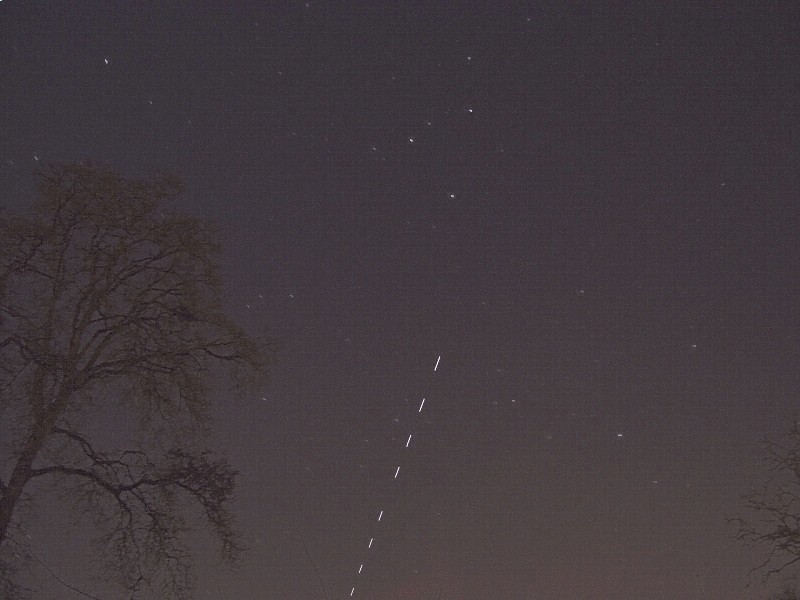
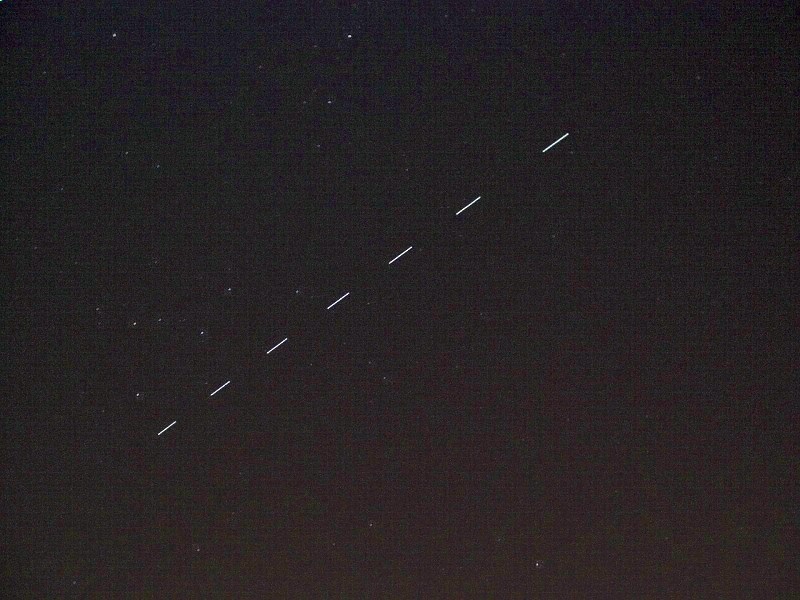
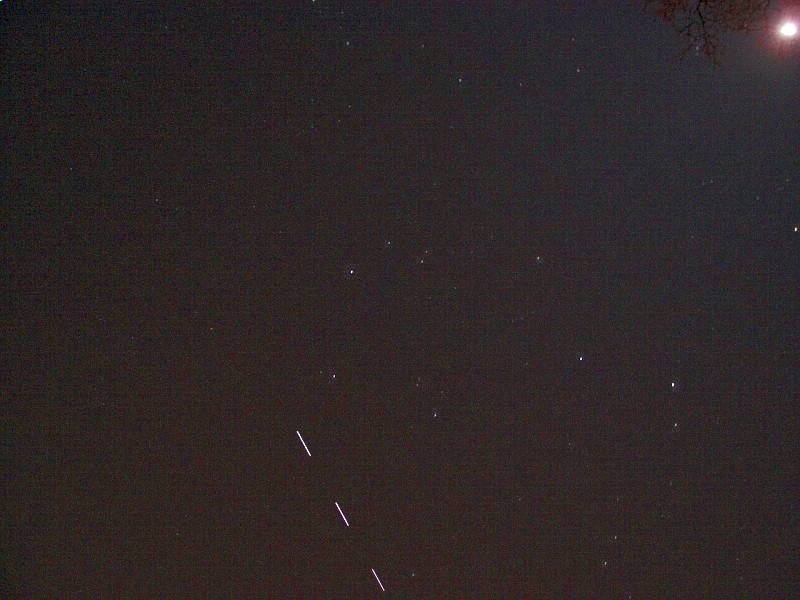
A passage of the International Space Station & Space Shuttle Atlantis ...
I took the following sequence of pictures
on 15 October 2002 from south of Portland, Oregon, during a single
passage of the International Space Station (ISS).
At the time, the space shuttle Atlantis
was attached to the ISS.
Each image is a time lapse of 8 seconds,
so the ISS-Atlantis looks like an extended line in the sky.
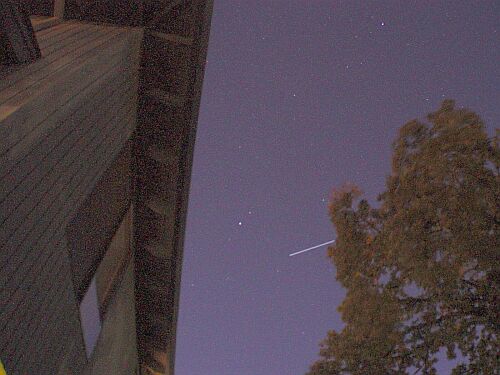
Here's the ISS just emerging from behind
an Oregon white oak, just past the meridian of its passage with a maximum
altitude of 49 degrees, at 19:33:53, and the closest-approach distance
of 515 km.

These are all 8-second timelapse images,
taken with a digital camera with a 0.45x extra-wide angle lens. Here,
the ISS has moved further along in its northeast trajectory.
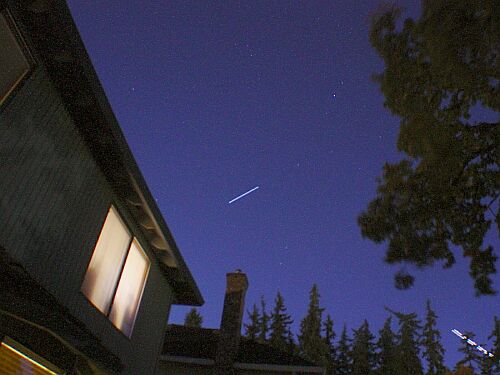
From the bottom right corner, a rival appears
-- a commercial aircraft.
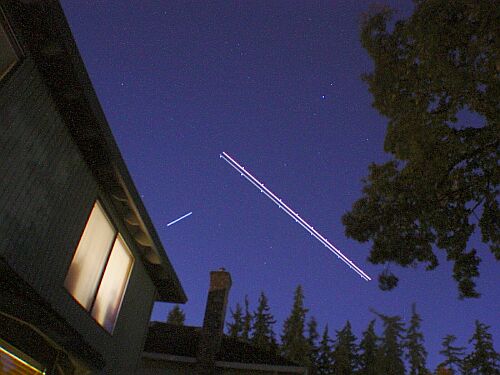
A few moments later, the aircraft, with
its twin steady lights and blinking lights, intersects the ISS's apparent
trajectory.
Remember, the ISS is moving probably about
30 times faster than is the plane, but its high orbit makes its 8-second
travel distance in this photo seem shorter.

The ISS sinks toward the southeast, seemingly
heading into a bright, waxing half moon ... as another plane appears below
and to the right. (For this and the next photo, I had moved the camera
and tripod over a bit to reveal the moon that had been occluded behind
the house.)
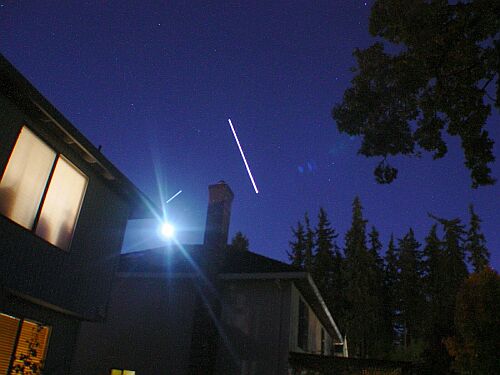
... And this plane too shall pass, as this
celestial dance of Space Station, half moon, and aircraft mark the night
sky.
I took all the above images with a Sony DSC-S85 digital camera mounted
on a tripod.